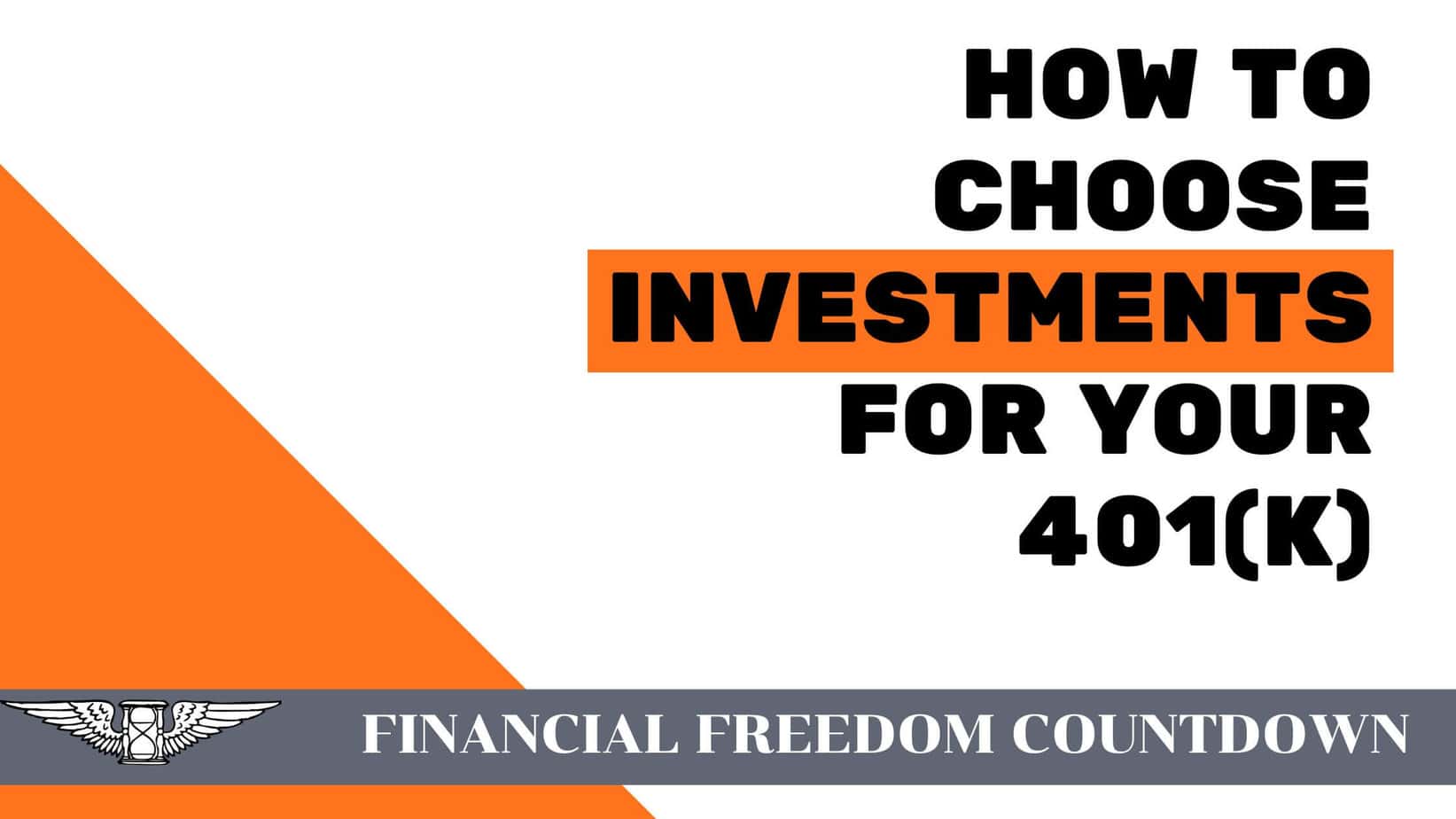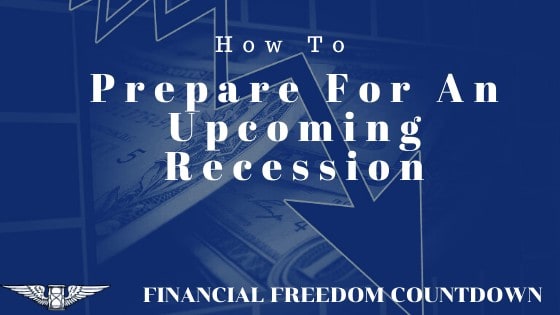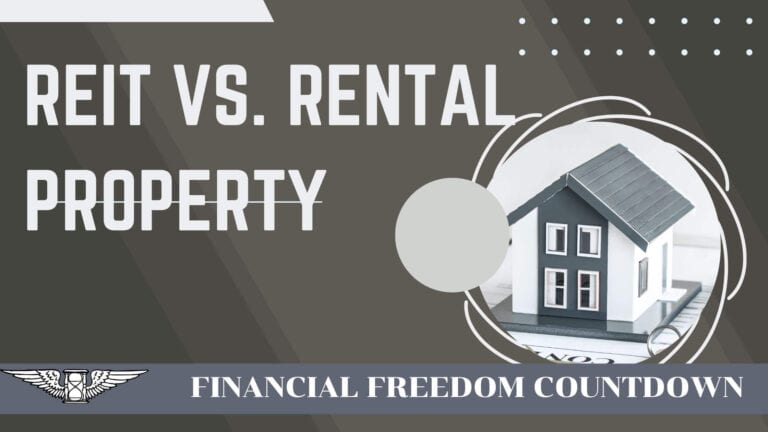How To Choose Investments for Your 401(k)

When planning for retirement, it’s crucial to use tax-advantaged accounts that help you save and reduce your overall tax liability.
Fortunately, there are usually numerous ways to do just that. Chief among them is a 401(k), a specific retirement account you can use to invest in multiple financial vehicles, including a mutual fund, stocks, bonds, and more.
However, you will likely have a critical question: How to choose investments for 401(k)? There is no set answer to this question. Instead, there are a series of criteria you need to use when making these decisions.
Select investments for your 401(k) based on your overall portfolio asset allocation after considering your age, risk tolerance and tax plan.
What Is a 401(k)?
A 401(k) is a “tax-advantaged” company-sponsored and supported retirement account that lets employees contribute a percentage of their paycheck, lowering their taxable income.
A company will set up the 401(k) account, typically managed by a separate financial firm, such as Fidelity, Vanguard, Schwab, etc., and you can then contribute to the account.
There are a variety of strict regulations on a 401(k), including what kind of investment you can make and when you can – and have to – withdraw money. Fortunately, an employer’s matching contributions often make this investment well worth it.
Furthermore, the investments will grow tax-free, meaning you won’t have to worry about paying taxes on the assets within your 401(k). This makes the tax benefits one of the primary reasons you should consider maxing out your 401(k).
However, since your employer ultimately operates the 401(k) plan, you have limited free reign. As defined by rules that the federal government sets, you can’t just take your 401(k) dollars and invest them anywhere you want.
Instead, your employer will work with a brokerage firm, financial advisor, and retirement consultant to give you an array of options in terms of income-producing assets.
Generally, you can withdraw funds from your 401(k) without penalty at age 59 ½. However, if you withdraw before reaching this age, you will be subject to a 10% early withdrawal penalty and required to pay income taxes on the distributed amount.
Additionally, you can take a 401(k) loan for specific situations, such as buying a starter home, which must be repaid along with interest.
Determine Your 401(k) Contribution Amount
Before deciding how to invest your money, you must determine how much you want to invest.
Since 401(k) contributions lower your taxable income, you should ideally contribute the maximum amount each year. For 2023, the amount is $22,500, as per the IRS.
Depending on your income, debt, and other financial goals, you may not be able to contribute the total amount every year. However, it would help if you prioritized your budget’s 401(k) contributions.
It is possible to retire early with only a 401(k), so figure out how to save money from your salary, even if it is challenging.
Some 401(k) plans also permit additional after-tax contributions to your 401(k), which can then be moved over using “in-service distributions” to a Roth IRA. The strategy is known as Mega Backdoor Roth IRA.
For example, in 2023, you can contribute $22,500 on a pre-tax basis to your 401(k) and $66,000 on a post-tax basis. Since direct Roth contribution limits are small, it is advisable to use this route to have a larger Roth account balance.
Of course, setting aside $73,500 annually in your 401(k) is challenging unless you are a 7 figure-salary employee.
Many employers offer a match up to a certain percentage. Some of my employers offered a 6% match, and others even offered a 50% match.
The employer’s match is tax-deferred money invested on your behalf. Since the employer match is free money, at least make a minimum contribution to your 401(k) plan so you receive the full employer match.
What Factors Matter Most When Investing in My 401(k)?
Deciding what stocks, bonds, or mutual funds to invest in can take time and effort. Depending on the specifics of your employer’s retirement offerings, there can be an almost countless array of funds to invest in, and your personal retirement factors must inform your decisions. Some factors you need to pay attention to are
Retirement Date
First and foremost, when is your retirement? Are you looking at five years? 10? 30? This is an essential question because it determines what sort of risk you may be looking to tolerate. Stock markets will periodically crash, and while you can try to alter and rebalance your portfolio to avoid these crashes, doing so is largely impossible.
However, you will have time to rebuild your portfolio from potential losses if you are young. However, if you are older, you may not. As such, you will likely be able to take on more risk and make investment decisions with a higher risk tolerance if you are young.
Also, if you plan to retire early, you have a shorter time frame to earn and grow your money.
Making money by developing high-income skills and improving your human capital is one part of the solution. The other part is investing aggressively in your 401(k) and other areas such as real estate investments or cryptocurrency.
Furthermore, many mutual funds have different target date funds. A target date fund is a specific class of exchange-traded funds or mutual funds that shifts over time, becoming more conservative as it gets closer to the target date for retirement.
This target retirement date balanced fund manages risk for you, enabling you to update your portfolio automatically. Target date funds can be beneficial if you know you must access your money by a specific date.
For example, a 2060 target date fund assumes you will retire in the year 2060 and will automatically reduce your stock allocation and increase your bond allocation as your retirement date approaches.
Risk Tolerance
Risk tolerance requires you to answer this simple question: How much risk are you willing to tolerate?
Some people embrace the financial risks to grow their portfolio as much as possible.
For others, risk tolerance is non-existent, and they either fear risk or are worried about what will happen if they lose money.
All investments carry some risk, and the possibility of losing money always exists. However, risk tolerance ultimately impacts the kind of investments you make and your specific asset class.
Investors often confuse risk with volatility. Just because stock and bond funds decrease in value does not mean they are risky. Cash held without being invested often results in a loss of purchasing power due to the impact of inflation and is more dangerous in the long term.
Expense Ratios
No mutual fund is “free,” of course, and while there are ways to keep your expenses to a minimum – like with a passive fund – you will still have to manage expenses. Expense ratios are the money it costs to own and operate a mutual fund or Exchange Traded Fund (ETF).
Different funds charge different expenses, depending on their overall costs. You must find a fund that keeps your investment objectives in mind but keeps your expense ratios as low as possible.
Other funds – such as passive funds or index funds – track according to a pre-determined index. They are not actively managed, meaning these funds are the closest thing to “set it and forget it” that you can find.
Taxes
This usually is less of a factor in a 401(k), but you must consider taxes in your portfolio. A traditional 401(k) allows you to avoid paying taxes on your investment, enabling you to get an up-front tax break on any money you invest into your 401(k).
A Roth 401(k) reverses the taxation: Instead of getting a tax break on contributions, you contribute money already taxed. Subsequently, during retirement withdrawals, you do not pay taxes.
If your 401(k) plan has both options, learn the distinction between a traditional and Roth 401(k) and why selecting a traditional 401(k) option is usually preferable.
It would be best to speak with your retirement professional about how the taxes will impact your portfolio.
Since space in tax-advantaged accounts is limited, it will also influence what kind of investments you pick. It would help if you used the asset location strategy and your asset allocation to inform your investment choices.
Decide Your Stock and Bond Allocation
Based on your retirement date, risk tolerance and tax startegy coupled with your asset allocation you should determine how much stock and bond exposure you want in your entire portfolio, not just your 401(k).
For example,
- You determine you need 60% stock, 20% bonds and 20% real estate.
- Based on your current average net worth of $1M you already have a rental property worth $200,000 and around $200,000 of I-Bonds.
- You now need $600,000 of stocks across all your accounts so now you can choose your 401(k) investments accordingly.
Choose Your 401(k) Investments
As noted above, every employer will offer an array of different retirement funds that you can invest in. You ultimately make these investment choices based on the factors listed above. However, generally speaking, your investment choices will have the following components.
Stocks Funds
When most people think of investing in a 401(k), they will probably think of investing in stocks. Stocks, of course, are one of the most common forms of equity. Investing in a stock means you have a small piece of ownership.
The value of a stock can move up or down based on various factors, including the economic conditions of the moment and the company’s performance.
Younger investors can afford to be more risk tolerant, while older ones – retiring soon – will likely be more cautious with their 401(k) investments. Indeed, many older investors shift towards income preservation and cash flow, choosing to move their 401(k) investments into funds that will pay dividends.
Stock funds are categorized into different groups. Typically, your 401(k) will provide at least one fund from the following categories: U.S. large-cap, U.S. small-cap, international, emerging markets, and sometimes alternatives like commodities or real estate investment trusts (REITs).
Few 401(k) plans also contain dividend-focused funds like the Dividend Aristocrats.
Bond Funds
Bonds are somewhat different than stocks. A bond is a form of loan to a public or private-sector organization. By investing in bonds, you loan money to a company or government. You are then supposed to get regular payments and interest returned.
Bonds, like stocks, can be traded, enabling you to buy or sell stocks and bonds based on your position.
Your 401 k plan provider could have money market funds, which are conservative and highly liquid. They invest in cash, cash-equivalent securities, and high-quality short-term securities like U.S. Treasury bills with average maturity of less than 60 days.
A stable value fund is also considered a conservative investment option. However, they differentiate themselves by allocating money into high-quality, short- to intermediate-term bonds, typically with an average duration of 2–4 years.
Or your employer’s plan may have a total bond market index fund as one of the investment options in your 401(k).
While bond funds might feel safe, consider that it is equivalent to investing your hard-earned money in a savings account or CD instead of growing it. Tax-advantaged space is scarce due to the tiny contribution limits of the 401(k) account. Hence, it is always advisable to choose investing vs. savings.
Mutual Funds
The mutual fund is the most common investment choice offered by a 401(k) plan.
Mutual funds are professionally managed funds created and managed by professional investors. A mutual fund is a pool of equities, typically stocks, bonds, or other assets.
You can then buy or sell a share of a mutual fund similarly to how you would buy a stock, although there are some differences.
Various mutual funds are set up for different users. There are stock mutual funds, stock and bond mutual funds, and more. These funds have different risk tolerances, compositions, and more. Some funds target different investor tastes, like stable value funds or international funds.
Mutual funds tend to be more conservative, which means they are often excellent sources of retirement dollars. They also have the advantage of being highly liquid, meaning you can typically sell a mutual fund and receive cash from the sale very quickly.
Indeed, mutual funds are often part of a diversified portfolio preferred by retiring individuals. They also offer built-in diversification, as funds tend to spread over multiple equities.
However, like any other fund, you have to do your homework and ensure that the fund you are investing in is sufficiently diversified to avoid losing a massive chunk of your 401(k) in the event of a stock market crash or other adverse events.
Furthermore, you must monitor the expense ratio, meaning how much investors or researchers will charge to manage this critical part of your 401(k) plan.
Exchange Traded Funds (ETFs)
An exchange-traded fund, or ETF, operates similarly to a mutual fund. It contains a “basket” of securities that allows individuals to purchase shares of the fund. In doing so, you achieve a high degree of diversification, as ETFs are compromised of multiple financial instruments. ETFs also operate very similarly to mutual funds in that they come in many shapes and sizes. You can earn money from dividends and buy and sell shares like any other stock.
ETFs are often low cost passively managed, meaning that no fund manager is researching new stocks and altering the composition of an ETF. Once they are established, their design is set.
This may mean that an ETF doesn’t adjust for newer market realities or conduct in-depth research, but it also saves on cost, as the expense ratio is low.
However, there are actively managed ETFs as well. ETFs can target specific industries, bonds, locations, and more. Indeed, there is an array of ETFs for just about any investor.
Company Stock
Often, companies will offer discounted company stock purchases as part of a 401(k) plan. This is often done to provide employees with a retirement benefit.
However, it is also meant to give you a stronger connection to your employer. After all, if your retirement depends upon the success or failure of a company, won’t that likely make you work harder to ensure their success?
While there are absolute benefits to being provided with company stock as part of your retirement, you should consider that as only a tiny piece of your overall retirement planning.
The main reason? A need for diversification.
Remember, you must diversify your entire retirement portfolio to plan for your retirement properly. If you have a 401(k) that is mainly comprised of a company’s stock, that may put you at significant risk for the potential crash of the company.
You may lose your job and retirement savings if the company goes down. This has happened in plenty of instances in the past, including individual companies like Enron and Worldcom.
Yes, it can be tempting to bet on individual stocks, especially if they are one of the moonshot stocks. However, participating in ESPP might be a better option since you can book tax losses if the aggressive growth does not materialize. A Deferred Compensation Plan could also be an alternative for highly compensated employees.
Variable Annuities
Some 401(k) plans include variable annuities as an investment option, which are a hybrid insurance company product, combining several funds that resemble mutual funds with certain insurance protections.
In the past, companies were hesitant to include annuities in their retirement plans due to concerns about potential lawsuits if the insurer became insolvent. However, the SECURE Act passed in 2019 aimed to address these concerns by providing employers offering in-plan annuities with a legal safeguard against such lawsuits.
Employers are still required to thoroughly evaluate annuity providers to ensure compliance with state laws and financial stability and to mitigate liability.
It is usually better to avoid annuities because they are confusing, have junk fees, and are harder to transfer when you leave employment.
Need More Investment Choices?
As you likely now understand, you don’t have the same flexibility within your 401(k) as you will with other retirement options. If you seek more flexibility and customization within your retirement funds and investment choices, a brokerage account or an Individual Retirement Account (IRA) is likely a better option.
If you decide to leave your employer, you can also roll over your 401(k) into an IRA with no tax consequences. The IRA account provides many more options than the limited employer-selected options in your 401(k).
Indeed, you can often use your IRA to invest in unique financial mechanisms, including gold, art, or other alternative investments.
Of course, you will still have the option to take advice from professional management services and still need to operate within the confines of current rules and regulations.
A self-directed IRA is an option if you want even more flexibility. Real estate investors often consider rolling over the funds to a Real Estate IRA for flipping houses or investing in real estate notes.
What Are the Best Investment Options for a 401(k)?
Choosing investments within a 401(k) is up to you.
Also consider 401(k) investments as part of your overall portfolio and determine your stock/bond allocation annually and readjust.
Yes, it can be scary to pick investments where you park your life savings while trying to minimize the risk involved as part of your retirement plan. But consider your long-term investing goals as you pick among the investments offered.
As long as you have the basics of personal finance covered, low-cost passive stock index funds can be a suitable option. After all, investing in the S&P 500 has provided decent returns with sufficient diversification for one asset class.
Use some of the best free retirement calculators to determine how much you need to retire. At a high level, you can use the 4% safe withdrawal rate rule of thumb to decide what should be your nest egg.
Of course, if you are pursuing financial independence, you need additional investment options besides a 401(k). The low pre-tax contribution limits will make it harder to retire after working only a few years.
What is more important than how you choose your investments is having a deep understanding of what factors will drive you to make the right choices among the various asset classes.
Timeframe and risk tolerance are likely drivers, but every individual has their own factors that influence their choices. By researching and speaking with a financial professional, you can better understand the right decisions for you.

John Dealbreuin came from a third world country to the US with only $1,000 not knowing anyone; guided by an immigrant dream. In 12 years, he achieved his retirement number.
He started Financial Freedom Countdown to help everyone think differently about their financial challenges and live their best lives. John resides in the San Francisco Bay Area enjoying nature trails and weight training.
Here are his recommended tools
Personal Capital: This is a free tool John uses to track his net worth on a regular basis and as a retirement planner. It also alerts him wrt hidden fees and has a budget tracker included.
Platforms like Yieldstreet provide investment options in art, legal, real estate, structured notes, venture capital, etc. They also have fixed-income portfolios spread across multiple asset classes with a single investment with low minimums of $10,000.





